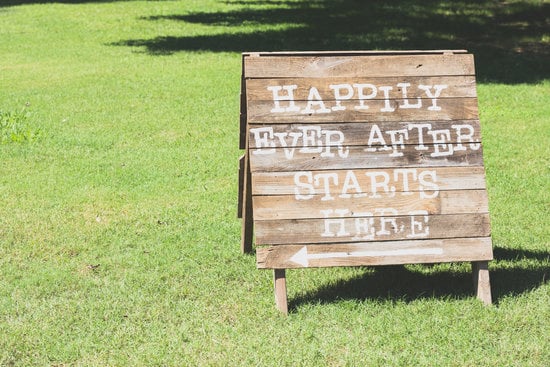Are you planning a wedding and wondering, how much does wedding flowers cost? Flowers play a significant role in weddings, setting the stage for elegance, romance, and beauty. The impact of wedding flowers extends beyond mere decoration, as they often symbolize love, happiness, and new beginnings. Understanding the costs associated with wedding flowers is crucial for couples looking to create the perfect ambiance for their special day.
The cost of wedding flowers is influenced by various factors that can significantly impact the overall budget. From the types of flowers chosen to the season in which the wedding takes place, and even the size of the event, there are several elements to consider when budgeting for floral arrangements. Additionally, couples may explore traditional versus non-traditional flower options as a way to further tailor their selections to fit their vision and budget.
In this article, we will delve into these factors in detail to provide insight into how much wedding flowers can cost. We will also explore average cost breakdowns for different floral arrangements and offer practical tips on saving money without compromising quality. Whether you’re considering hiring a professional florist or taking on the task of creating your own arrangements, understanding the costs involved is essential for making informed decisions about your wedding flowers.
Factors Influencing Cost
When considering how much does wedding flowers cost, it’s important to take into account a variety of factors that can influence the overall cost. One key element that plays a significant role in determining the cost of wedding flowers is the type of flowers chosen. Some flowers are more readily available and less expensive, while others may be rare and therefore come with a higher price tag.
In addition, the size and complexity of the floral arrangements will also impact the final cost. Larger weddings with more extensive flower needs will naturally incur higher costs compared to smaller, more intimate affairs.
Another crucial factor influencing the cost of wedding flowers is the season in which the wedding takes place. Certain flowers are only available during specific times of the year, and as such, their prices can fluctuate based on seasonal availability.
For example, peonies are often more expensive if out of season, whereas roses may be more affordable year-round. Factor into this equation whether you’re having an indoor or outdoor wedding event – as you might need larger arrangements for filling up space.
Lastly, the geographical location of your wedding can also affect flower costs. Areas with higher costs of living typically come with higher floral prices than areas where the standard of living is lower. Take into account shipping fees if you’re using imported materials or look into local florists who source their materials locally.
| Factor | Influence |
|---|---|
| Type of Flowers | Determines what range will your budget be. |
| Season | Determines if some types will be out of season or not. |
| Location | Determines overall cost due to overhead expenses. |
Traditional vs Non-Traditional Options
When it comes to choosing wedding flowers, couples often have to decide between traditional and non-traditional options. Traditional flower arrangements typically include popular choices such as roses, lilies, and hydrangeas, while non-traditional options may feature more unique and unconventional blooms like succulents, protea, or wildflowers. The decision between these two options can have a significant impact on the overall cost of wedding flowers.
Traditional flower arrangements are often readily available and easier for florists to work with, which can make them a more cost-effective choice. On the other hand, non-traditional options may require more effort and creativity from florists, which can result in higher costs. Additionally, the availability of non-traditional blooms may be limited depending on the season, leading to increased prices.
Factors to Consider When Choosing Between Traditional and Non-Traditional Options
- Availability: Cost differences based on seasonal availability of flowers
- Labor Intensity: Impact of labor and creativity required for non-traditional arrangements
- Durability: Long-term freshness and resilience of traditional vs non-traditional blooms
It’s important for couples to weigh their preferences against their budget when deciding between traditional and non-traditional options. While traditional arrangements may offer cost savings and familiarity, non-traditional options can add a unique touch to the wedding decor but at a potentially higher cost.
By considering factors such as availability, labor intensity, and durability, couples can make an informed decision that aligns with both their vision for the wedding and their budget constraints. Ultimately, regardless of which option is chosen, working closely with a skilled florist who understands the couple’s preferences can help achieve stunning floral arrangements while managing costs effectively.
Average Cost Breakdown
When it comes to planning a wedding, one of the most significant expenses to consider is the cost of flowers. Wedding flowers not only add beauty and elegance to the ceremony and reception but also contribute to the overall ambiance of the event. However, understanding how much wedding flowers cost can be a bit daunting. In this section, we will provide a detailed breakdown of the average cost of wedding flowers, including bouquets, centerpieces, boutonnieres, and corsages.
To give you a better idea of how much wedding flowers cost on average, here is a breakdown of the costs for each essential floral element:
- Bouquets: On average, bridal bouquets can range from $100 to $350 depending on the types of flowers used, size, and intricacy of the design.
- Centerpieces: The cost of floral centerpieces can vary widely based on factors such as size, complexity, and type of flowers. Generally, couples can expect to spend anywhere from $75 to $250 per centerpiece.
- Boutonnieres and Corsages: These smaller floral accessories for wedding party members typically range from $15 to $40 each.
It’s important to note that these are average costs and actual prices may differ based on factors such as location, florist expertise, and seasonal availability. By understanding these rough estimates for wedding flower costs, couples can better plan and budget for this crucial aspect of their special day.
As you plan your wedding flower budget, keep in mind that there are ways to save money without compromising on beauty. Whether it’s choosing in-season blooms or opting for non-traditional arrangements, there are numerous cost-saving strategies that couples can explore when it comes to their wedding flowers.
Cost-Saving Tips
When it comes to planning a wedding, the cost of flowers can often be a significant concern for couples. However, there are plenty of ways to save money on wedding flowers without compromising on the beauty and quality of the floral arrangements.
One of the best ways to save money on wedding flowers is by carefully choosing the types of flowers you want to use. Some flowers are more expensive than others, so opting for in-season blooms or locally sourced flowers can significantly reduce costs.
Another cost-saving tip for wedding flowers is to repurpose arrangements throughout the event. For instance, using bridesmaids’ bouquets as part of the head table decor during the reception can help stretch your floral budget further. Additionally, consider focusing on key areas for floral decorations, such as the ceremony arch and reception entrance, rather than adorning every surface with flowers.
Furthermore, working with your florist to explore alternative options such as greenery, foliage, and non-floral accents can help cut costs while still achieving a stunning aesthetic. Another way to save money is by being open to non-traditional flower options such as potted plants or silk flowers. These alternatives can be just as beautiful and long-lasting as traditional fresh flowers but come at a fraction of the cost.
By implementing these cost-saving tips and getting creative with your choices, you can successfully reduce the expenses associated with wedding flowers without sacrificing their beauty or impact on your special day.
Real-Life Examples
Case Study 1: Sarah and John’s Classic Wedding
Sarah and John opted for a classic, elegant wedding with a timeless color palette of white and green. Their floral arrangements included lush white peonies, roses, and hydrangeas, along with delicate greenery.
The total cost for their wedding flowers came to $3,000, which covered the bride’s bouquet, bridesmaid bouquets, boutonnieres for the groom and groomsmen, as well as centerpiece arrangements for the reception tables. While this may seem like a substantial investment, Sarah and John prioritized the impact of their floral decor and chose high-quality blooms to complement their overall wedding aesthetic.
Case Study 2: Claire and Michael’s Non-Traditional Celebration
Claire and Michael wanted to break away from traditional wedding norms and opted for a non-traditional celebration filled with unique touches. Their floral budget reflected their desire for unconventional arrangements, including succulent-filled bouquets, wildflower centerpieces, and statement-making floral installations at their outdoor venue.
Despite the novelty of their flower choices, Claire and Michael were able to keep their wedding flower costs at $2,500 by working closely with a florist who understood their vision and offered cost-effective alternatives to more expensive blooms.
Case Study 3: Emily’s DIY Approach
Emily was determined to have beautiful wedding flowers while staying within a tight budget. She decided to take on the task of creating her own floral arrangements by purchasing wholesale flowers and greenery in bulk.
With some guidance from online tutorials and assistance from family members, Emily successfully crafted her own bouquets, centerpieces, and boutonnieres. By opting for seasonal blooms that were readily available during her wedding month of September, Emily managed to spend just $800 on her DIY wedding flowers – a fraction of what she would have paid if she had hired a professional florist.
These real-life examples showcase the wide range of options when it comes to wedding flower budgets and resulting floral arrangements. Whether couples choose traditional or non-traditional options or decide between hiring professionals or taking on DIY projects, there are opportunities to create stunning floral displays while being mindful of costs. Ultimately, each couple’s unique preferences will determine how much they are willing to allocate towards their wedding flowers based on their priorities.
Hiring a Professional vs DIY
When it comes to deciding on the flowers for your wedding, one of the biggest decisions is whether to hire a professional florist or take on the task of creating wedding flowers yourself. Both options have their pros and cons, and it’s important to weigh them carefully before making a decision.
Pros of Hiring a Professional Florist
One of the main advantages of hiring a professional florist is their expertise and experience in creating stunning floral arrangements. They can provide valuable advice on flower selection, design, and seasonal availability. Additionally, professional florists have access to a wide range of flower varieties and can ensure that the flowers are fresh and in prime condition for your big day.
Cons of Hiring a Professional Florist
Of course, hiring a professional florist comes with a cost. The expertise and service provided by a professional florist may come with a higher price tag, which may not be feasible for couples on a tight budget. Additionally, relying on an external vendor means relinquishing some control over the floral design process.
Pros of DIY Wedding Flowers
Taking the DIY approach to wedding flowers can offer significant cost savings. By purchasing flowers from wholesale sources and arranging them yourself, you can potentially cut down on the overall expense of wedding flowers. Furthermore, DIY allows for complete creative control over the floral arrangements, ensuring that they perfectly align with your vision for your special day.
Ultimately, weighing the pros and cons of hiring a professional florist versus taking on the task of creating wedding flowers yourself depends largely on your budget, level of creativity, time constraints, and personal preferences.
Conclusion
In conclusion, the cost of wedding flowers can vary greatly depending on a multitude of factors. From the types of flowers chosen to the size of the wedding and the season in which it takes place, there are many elements to consider when budgeting for floral arrangements. Traditional versus non-traditional options also play a significant role in determining costs, as more unique and exotic flowers may come with a heftier price tag.
Despite the potential for high costs, there are several ways that couples can save money on their wedding flowers without sacrificing quality. For example, opting for in-season blooms or considering non-traditional alternatives can help keep expenses manageable. Additionally, DIY approaches and seeking out less expensive professionals can also contribute to cost savings.
Ultimately, understanding how much wedding flowers cost requires careful consideration of all these factors. By being informed about the average breakdown of floral expenses and being aware of practical cost-saving tips, couples can confidently navigate their wedding flower budget and create beautiful arrangements that fit within their financial means.
Wedding flowers play an important role in setting the tone for a couple’s special day, and with a clear understanding of costs, they can be enjoyed without unnecessary stress over budgeting concerns.
Frequently Asked Questions
What Is a Reasonable Amount to Spend on Wedding Flowers?
The amount to spend on wedding flowers varies greatly depending on the budget and priorities of the couple. On average, couples spend around 7-8% of their total wedding budget on flowers, but this can vary based on individual preferences.
Is $5000 Enough for Wedding Flowers?
Whether $5,000 is enough for wedding flowers depends on the size of the wedding, the types of flowers chosen, and the overall budget. For a smaller or more intimate affair, $5,000 could be more than sufficient, while for a larger event with specific floral requirements, it might not be enough.
Is $1,500 Enough for Wedding Flowers?
A budget of $1,500 for wedding flowers can work for more intimate weddings or those where florals are not a major focus. With careful planning and consideration of lower-cost blooms and arrangements, $1,500 could be enough to create beautiful floral displays that complement the overall wedding theme.

I have been involved in marriages for over 20 years helping couples and singles understand more about them.





